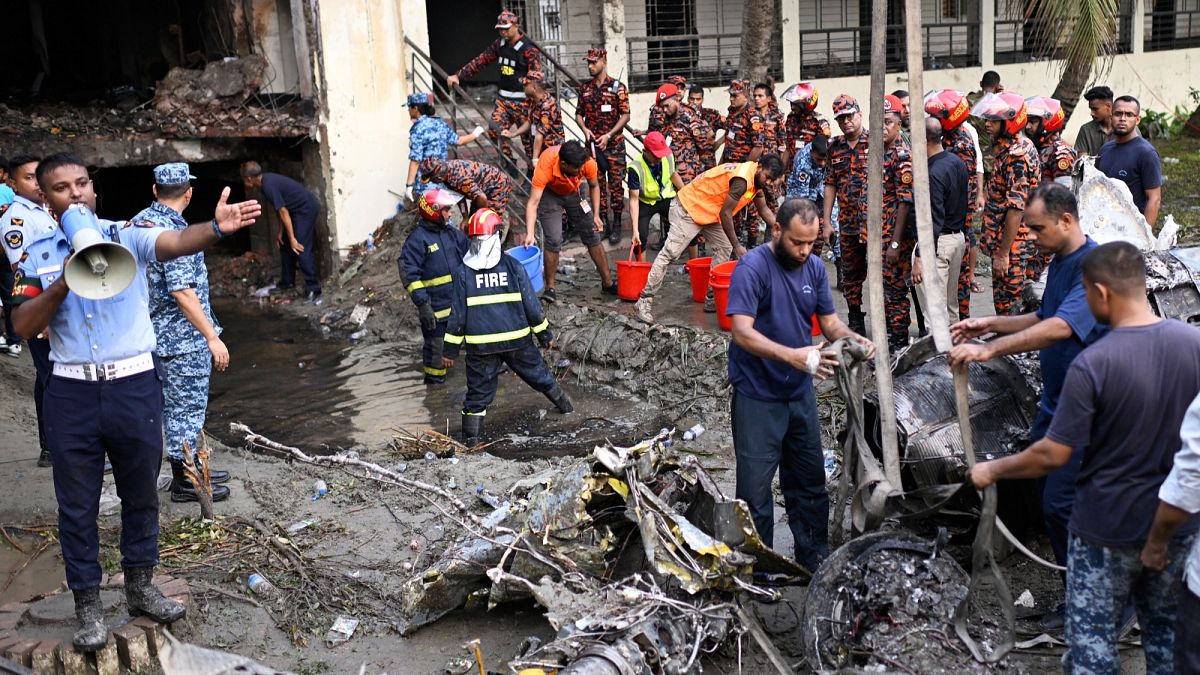

In a world where natural and man-made events influence the rhythm of daily life, recent occurrences across various regions demonstrate both the challenges and resilience that communities exhibit in the face of adversity. By exploring these narratives, we gain insight into the interconnectedness of our global society and the steadfast spirit of humanity.
In Bangladesh, a somber event unfolded in Dhaka’s Uttara neighborhood, where a tragic Air Force jet crash at Milestone School and College resulted in the loss of at least 20 lives. The incident occurred while students were engaged in their studies, underscoring the unpredictability of life’s circumstances. Authorities have swiftly commenced investigations to ascertain the factors leading to the crash, emphasizing the need for stringent safety measures and systems to protect civilian spaces.
Meanwhile, in South Korea, a series of intense seasonal rains have been sweeping across the northern regions of the country, leading to devastating consequences. According to reports, the monsoon rains have resulted in the deaths of at least 17 individuals, with 11 more still unaccounted for. The deluge, which brought more than 170mm of rain in areas like Gapyeong county, has precipitated landslides, submerged homes, and swept away vehicles. This powerful demonstration of nature’s force highlights the ongoing importance of robust infrastructure and responsive emergency services to safely navigate climatic challenges.
Shifting focus to Hong Kong, the city has been experiencing strong winds and heavy rain from Typhoon Wipha, prompting authorities to issue their highest tropical cyclone warning. In anticipation of the storm’s impact, numerous flights were canceled, and schools were closed as precautionary measures. The typhoon was located about 60 kilometers southeast of Hong Kong as intense waves impacted the city’s coastal areas. This response showcases the proactive strategies in place to safeguard public welfare amidst severe weather conditions.
In Australia, the environmental landscape has prompted discussions on defining disasters. The South Australian government, led by Premier Peter Malinauskas, has recently proclaimed an algal bloom incident as a natural disaster. This declaration arose following significant ecological damage and mass deaths among marine species. The premier’s decision underscores the urgency to address environmental phenomena with the gravity and response mechanisms they necessitate, despite differing perspectives from the federal authorities.
These global events, disparate in nature yet unified in their impact on human and natural systems, remind us of the ever-present need for vigilance, preparation, and cooperative effort. Strategies blending immediate response with long-term planning are instrumental in fostering adaptability and resilience within communities. Through mindful collaboration and shared learning, societies can navigate these trials with foresight and fortitude.
As we witness these unfolding stories, let us all find inspiration in the collective resilience and unwavering spirit of those affected, honing the tools necessary for stronger, more harmonious relationships with our environment and one another.
Source: {link}
